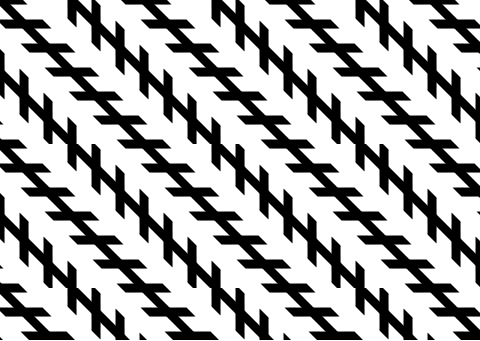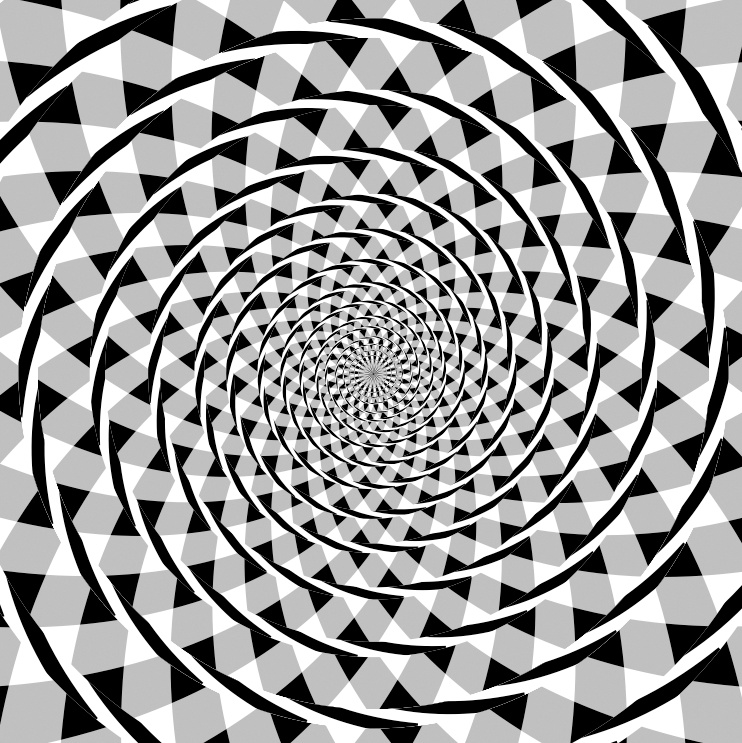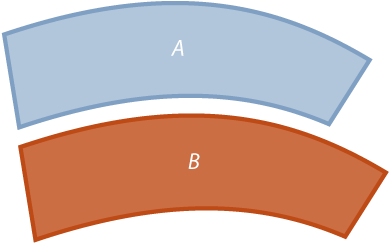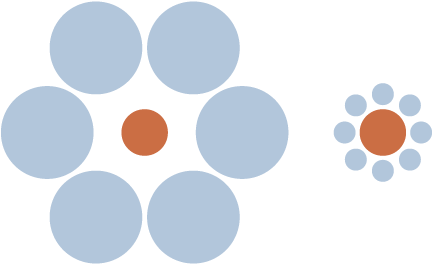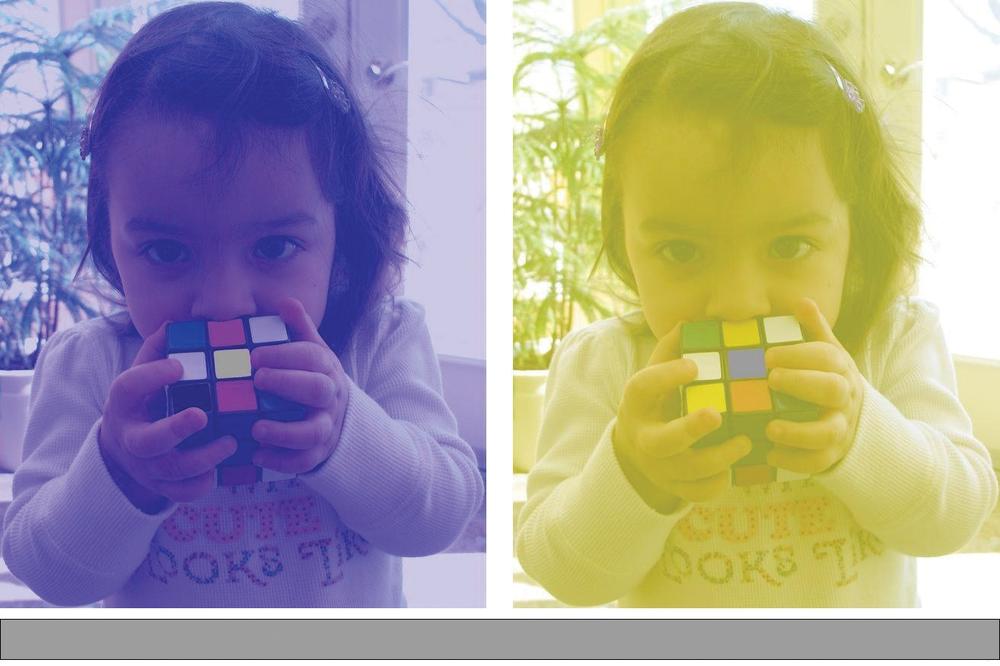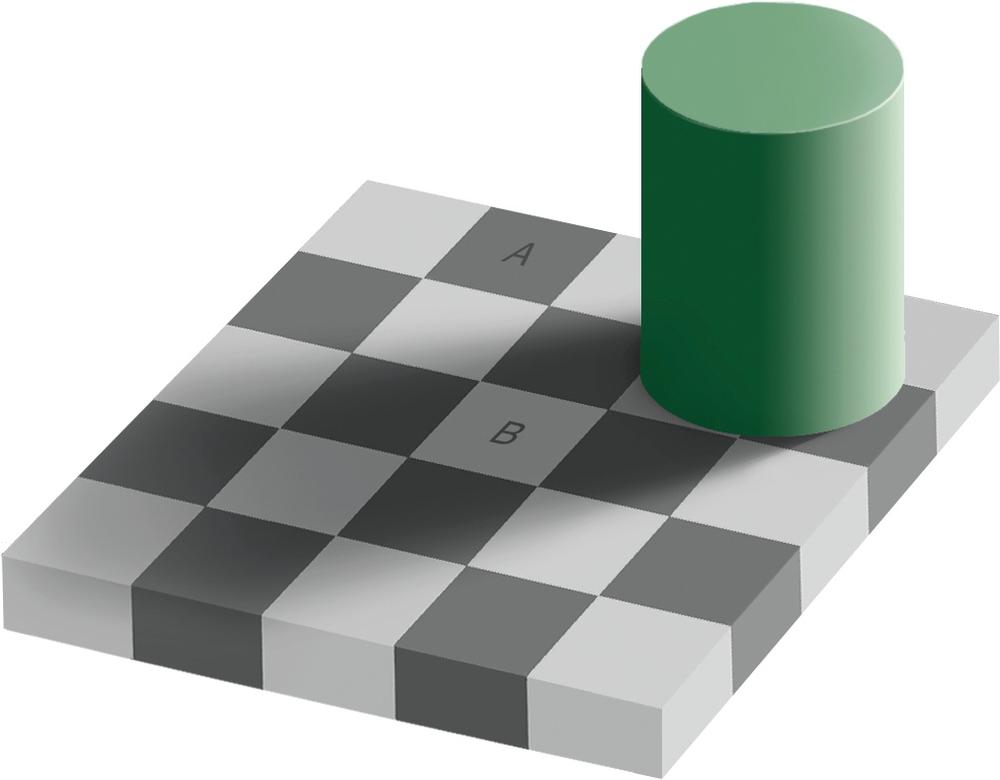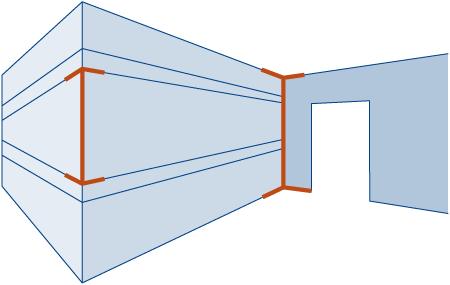Many of the most familiar optical illusions are distortions. They take advantage of the brain's assumptions to skew the way you perceive contours, lengths, colors, and shading.
For example, the long diagonal lines in the following picture (which run from the top-left to bottom-right) are perfectly parallel. However, the pattern of cross marks in the line fools your brain into thinking they lean toward one another.
Here, your brain is confused by angles that aren't quite what it expects. It's as if your brain expects the hatch marks to cross each line at a right angle. You can almost feel your brain mentally twisting the lines to make them fit its expectation.
The following image shows a more ambitious pattern that easily blinds the brain. The image shows a series of concentric circles, but the brain is locked into a different interpretation, and insists on seeing a spiral. (Trace your finger around one of the circles if you don't believe it's concentric.)
The remarkable part of both these illusions isn't that your brain is fooledâafter all, its mistaken logic is reasonable and (more importantly) it's blindingly fast. The amazing part is that even if you carefully measure the angle of the slanted lines or trace out the circles, thereby proving the illusion, you still can't convince your brain that it's made a mistake. In fact, no amount of pleading can convince your brain to alter its wonky interpretation. Your brain may take a lot of rules into account when it decides how to view a scene, but it has no interest in your slow-thinking deductive logic.
Tip
To put it another way, you aren't in control of what you perceive. So expect flaws in your vision and be prepared to be fooled by magicians, UFO sightings, and apparent paranormal phenomena. Seeing may be believing, but only if you don't mind being royally snookered.
Along with distortions of shape, your brain can also mislead you when sizing up the length, size, and color of an object. And when the brain's assumptions fail, the effects tell us quite a bit about the brain's book of visual rules, tricks, and shortcuts.
For example, the following illusion shows two curved shapes. The bottom shape appears to be larger, but it's actually identical to the top shape.
This illusion works because in its haste, your brain makes a few simplifications. It notices the way the left edges of both shapes line up, and takes that into account, discounting the fact that the lined-up edge is gently slanted. When your brain then turns its gaze to the right side, it correctly notices that the bottom shape kicks out a bit further. Thus, the brain concludes that the bottom shape is bigger, missing the fact that the left edge of the bottom shape actually sits a bit further to the right than the edge of the top shape. (If the shapes were truly lined up, the top-left corner of each shape would be positioned on the same vertical line.)
A similar faulty rule is on display in the orange circles of the next optical illusion.
Here, your brain makes two correct observations: the orange circle on the left is small compared to its blue neighbors, and its counterpart on the right is large compared to its neighbors. However, once the brain settles on this intriguing fact, it becomes blind to the fact that both orange circles are the same size. Instead, the proportionally larger one (on the right) seems larger than the one on the left.
Shapes and sizes aren't the only thing that can confuse your brain. Your brain can easily make similar mistakes when comparing brightness or colors. In the carefully set up illusion below, two cubes are shown with different lighting. In the center of the front face of the cube is a square that appears to be yellow in one figure and blue in the other. However, the color is actually identical in bothâit's the dull shade of gray that's shown in the bar below. (Virtually the only way to convince yourself of this illusion is to use bits of paper to block out the rest of the picture, so that you see only the squares in question.)
In this illusion, the brain isn't exactly wrongâit's simply compensating for what it believes is a difference in lighting. It concludes that a square that appears gray under blue light is probably yellow, and a square that appears gray under a yellow light is probably blue. In other words, your brain's perception has a built-in routine for evaluating lighting conditions. This is the reason you can see quite normally at home in the evening, even though the artificial lights you're using cast a yellow-red shade of light that's dramatically different than the blue-tinted radiance of the sun at noon.
Note
Cameras can't adjust themselves to compensate for the color of light. This is one of the reasons why it's much easier for your eyes to interpret a scene than for your camera to take a great picture. Your brain can smooth out the oddities and inconsistencies of lighting conditions, but film (or the electronic sensor in your digital camera) isn't as forgiving.
A similar effect is at work in the legendary same-color illusion. Here, two squares that are filled with exactly the same shade of gray (A and B) appear to be dramatically different. Once again, it's almost impossible to accept this illusion unless you cover up almost everything else in the picture except the two squares in question.
The remarkable part of this illusion is that the brain picks up on a range of clues to make an emphatic conclusionâeverything from the 3-D shape of the cylinder that casts the shadow to the pattern of the checkerboard, which darkens significantly but imperceptibly around square B. (The latter part is the most significant factor in the illusion. The brain is deeply attached to the idea of a regular checkerboard pattern, and prefers to see that over anything else.)
So far, you've seen how the brain has built-in assumptions that help it interpret shapes, sizes, and colors (and sometimes lead to quirky mistakes). The brain also has a bag of tricks that it uses to convert the 2-D image that's projected on your eye to a realistic understanding of the 3-D world in front of you.
Consider the classic example of two lines, shown below. Even though a ruler will tell you that the lines are the same length, the brain stubbornly insists that the top one is shorter.
One explanation for this illusion is that the brain is biased towards picking out the cues of 3-D objects. Lines that angle inward are typically seen in objects that are nearby (like the table in the picture below). Lines that angle outward are more common in distant objects (like the back corners of the room). Here's an example that illustrates by comparing two lines that have the same length, but are placed in two different spots in a 3-D scene.
In the two-lines illusion, your brain is well aware of the fact that both lines are really and truthfully the same length. However, your brain also believes that the bottom-most line is farther away. If two objects look the same in your eye, but one is farther away, there's only one possible conclusionânamely, the object that's farther away is bigger. Thus, the brain "corrects" the length of the second line to take the imagined distance into account.
At first, it seems odd that the brain is so willing to skew the size of things based on their perceived distance. However, on second thought it makes a lot of sense. If the brain didn't perform this automatic adjustment, your father would appear to shrink to midget size as soon as he began walking away from you.
The brain has several other tricks for translating the 2-D picture in your eye into a 3-D model. It assumes that objects close to the horizon are farther away, and it compares unknown objects against nearby known objects to infer distance.
Note
A similar effect underpins the horizon moon illusion. In this scenario, the moon appears to be much larger than usual when it's low in the sky. This is because the brain sees the moon in relation to distant objects and the horizon. But when the moon is high in the sky, the brain has no such frame of reference, and so the moon appears tiny and insignificant.
Another 3-D cue is shading. When the brain takes in a scene, it expects to find a sun-like light source radiating from above, and it uses patterns of shading to infer contours and shapes. Humans co-opt these automatic assumptions with artful applications of makeup. To an unbiased observer (say, a computer or an alien being from another planet), makeup would seem like little more than face paint. But for the easily influenced human brain, makeup is processed like shadows, and suggests a more sharply defined face.
Lastly, the brain uses one physical detail to see in three dimensions: the slightly different vantage point that's provided by each of your two eyes. You probably already knew this, but it's a less important factor than you probably thought. The separation of your eyes helps your brain accurately judge depth for very close objects, but it's useless for far off ones. As you can readily test, if you cover one eye and wander around the house you might have trouble doing some precision tasks (like tying a knot or chopping tomatoes), but you won't have any difficulty interpreting the shapes around you as 3-D objects.
Get Your Brain: The Missing Manual now with the O’Reilly learning platform.
O’Reilly members experience books, live events, courses curated by job role, and more from O’Reilly and nearly 200 top publishers.
